MLK Day 2018: Reflections and Next Steps
Recognizing Martin Luther King Day at Sasaki
 Sasaki
Sasaki
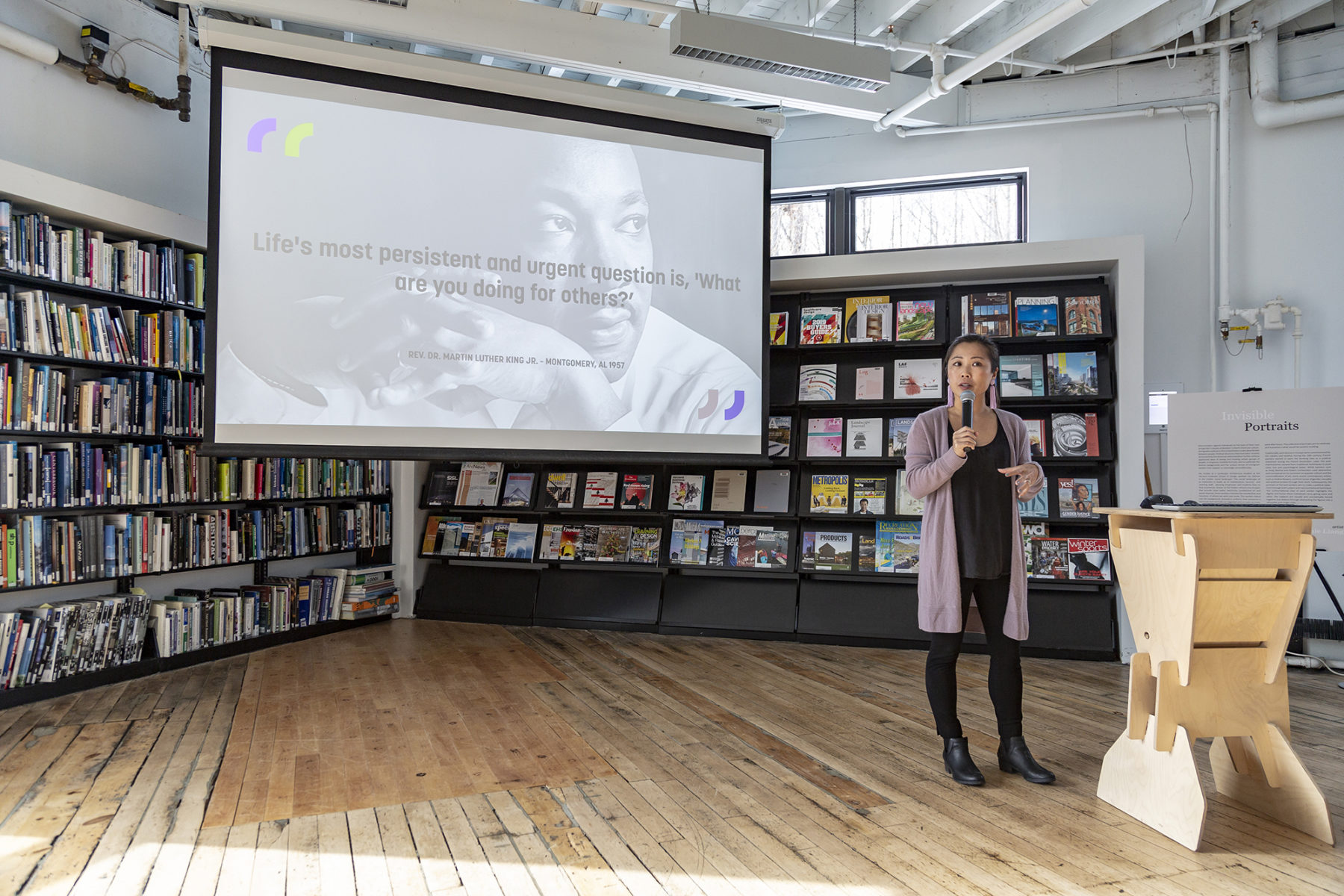
Continuing an annual Sasaki tradition, the Watertown office recognized the 2019 Martin Luther King Jr. Day holiday with a week of programming to spur dialogue around how designers and citizens alike carry forward the civil rights leader’s legacy.
The week began with a designer-led pecha kucha presentation on five of MLK’s most impactful marches and their lasting imprint on the way we conceive of streets and public space. Sasaki was honored to host as speakers Marie St. Fleur, former State Representative and Executive Director of King Boston, and Sabrina Dorsainvil, civic designer and program director at the Mayor’s Office of New Urban Mechanics. The week’s programming also included a service opportunity with the Greater Boston Food Bank, as well as an art exhibition and artist remarks from Sasaki designer Annie Liang whose Invisible Portraits series explores themes of identity, immigration, labor, and invisibility. Scattered throughout the week, Sasaki designers lent their expertise to the Sasaki Foundation’s current cohort of researchers in daylong charrettes.
Scroll to see more photos and to learn more about each event.
The week kicked off with a pecha kucha presentation of five of King’s most impactful marches and their lasting influence on both our social and built environments.
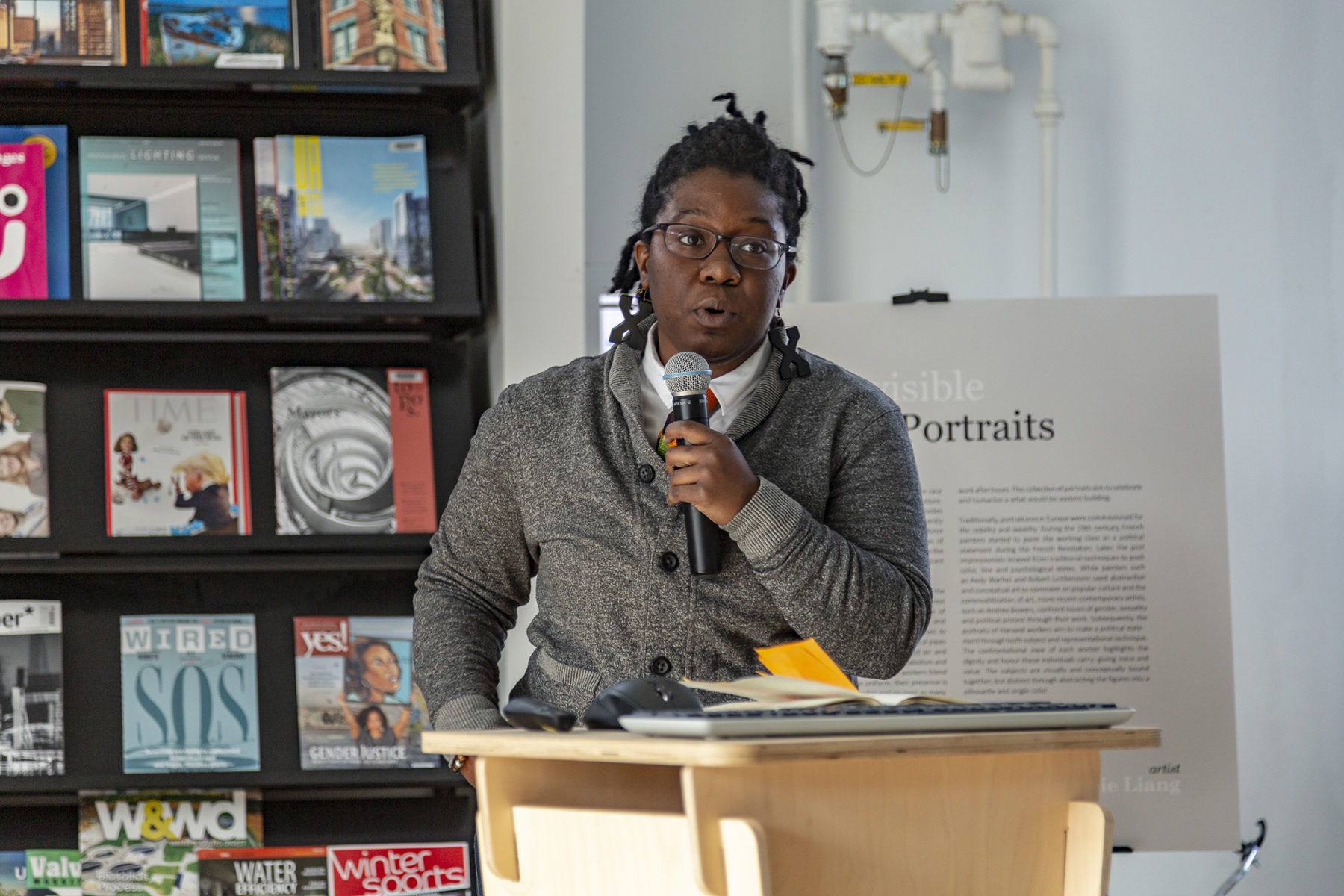
Sasaki designers also lent their time and skills to the Foundation research team, Please Touch the Art, which focuses on bringing art experiences to the visually impaired.
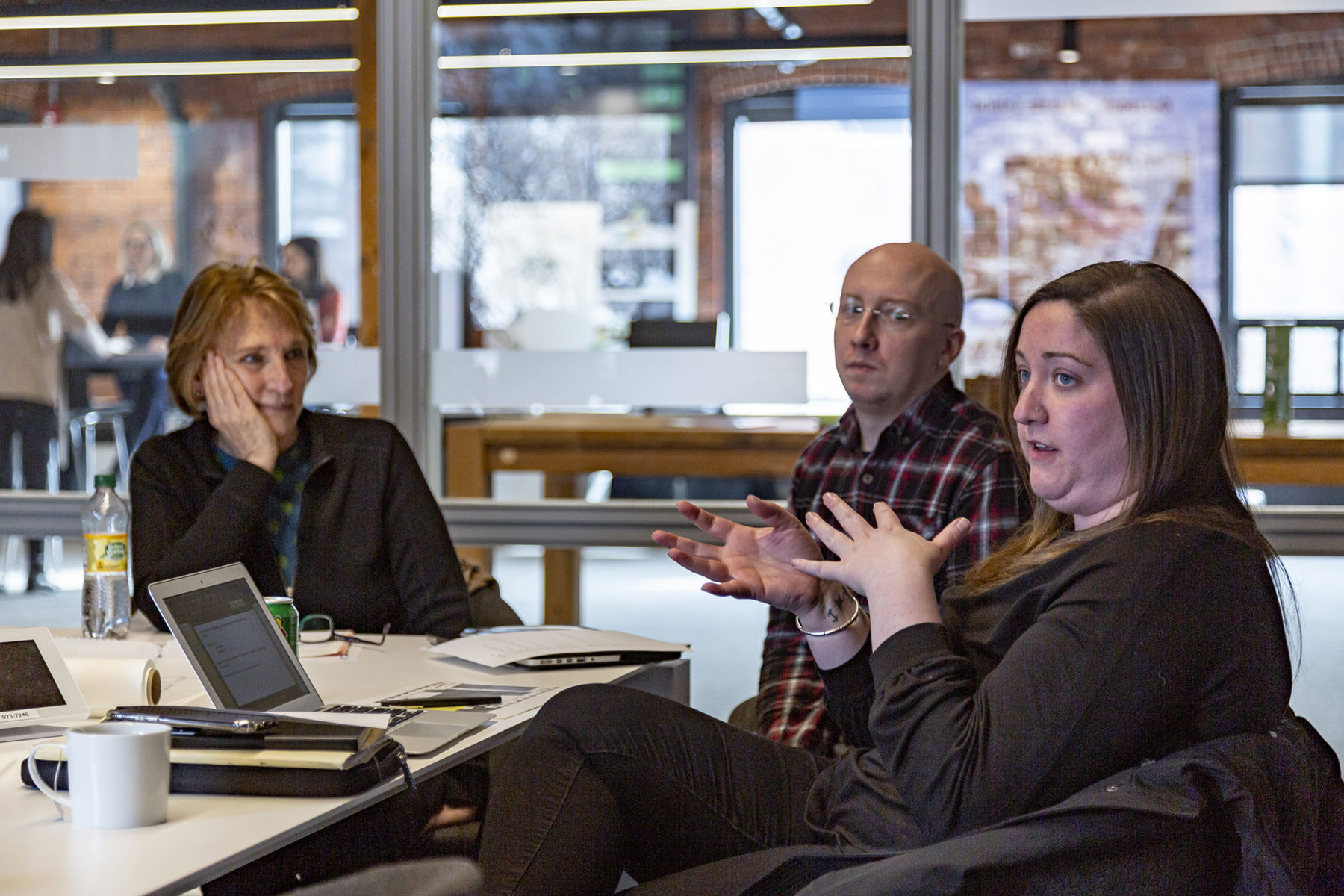
Marie St. Fleur is leading the effort to highlight the King family’s time in Boston through the new memorial on Boston Common, the establishment of a “King Center for Economic Justice” in Roxbury, and other initiatives. On Tuesday, she spoke on King’s legacy, Corretta Scott King’s undercelebrated impact as a civil rights leader in her own right, and the work of bringing the King memorial to fruition in Boston. “Change is hard,” she stated. “We tend to romanticize MLK, but [King’s life] wasn’t a cake walk. Those struggles were real. This memorial is about our shared history. It’s also finishing the work the civil rights movement started. There is no reason a child in America should go to bed hungry today; we’re too blessed.”
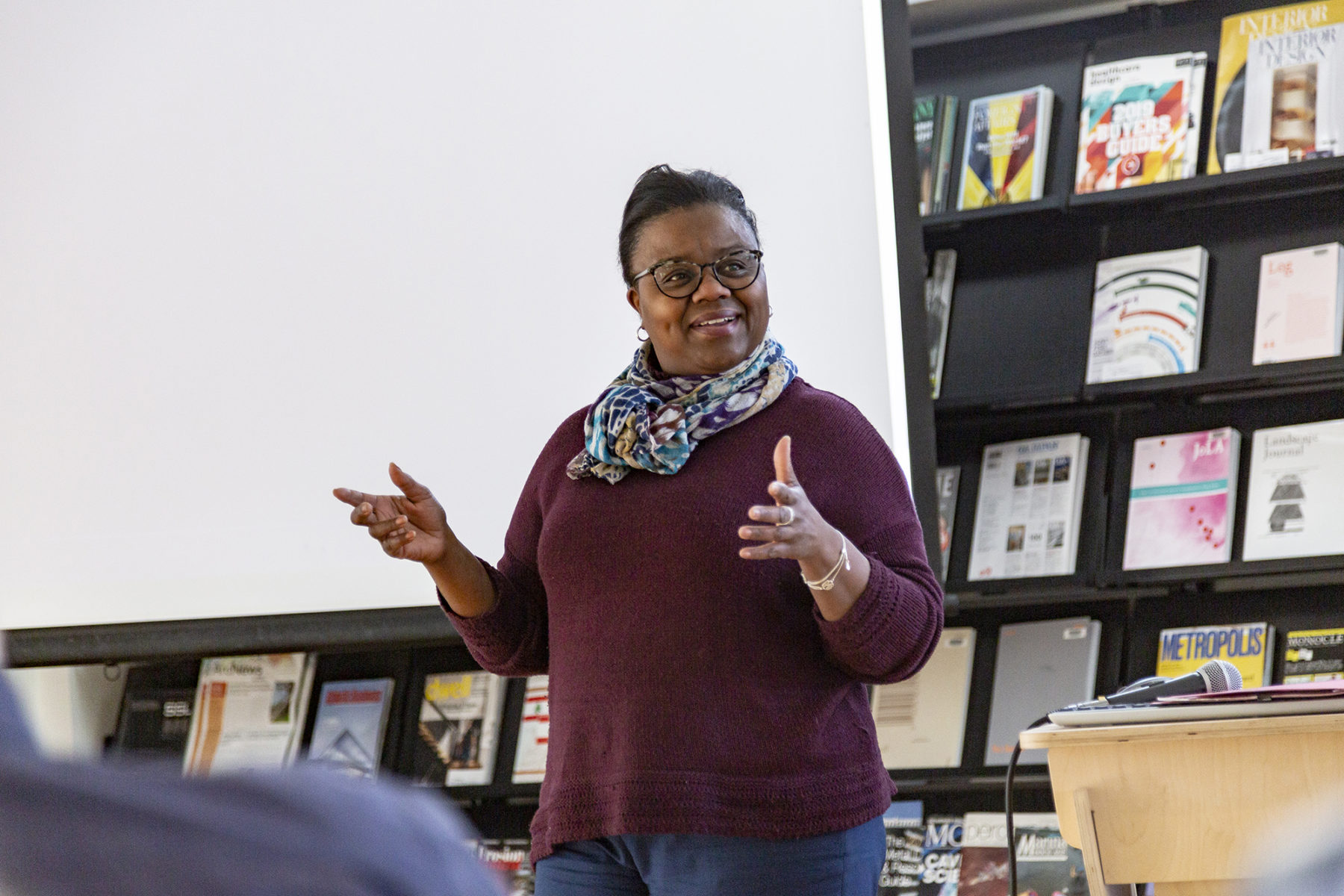
Sasaki designers started Wednesday’s activities with the Charles River Floating Wetlands charrette. The research cohort aims to create a healthy and swimmable Charles River.
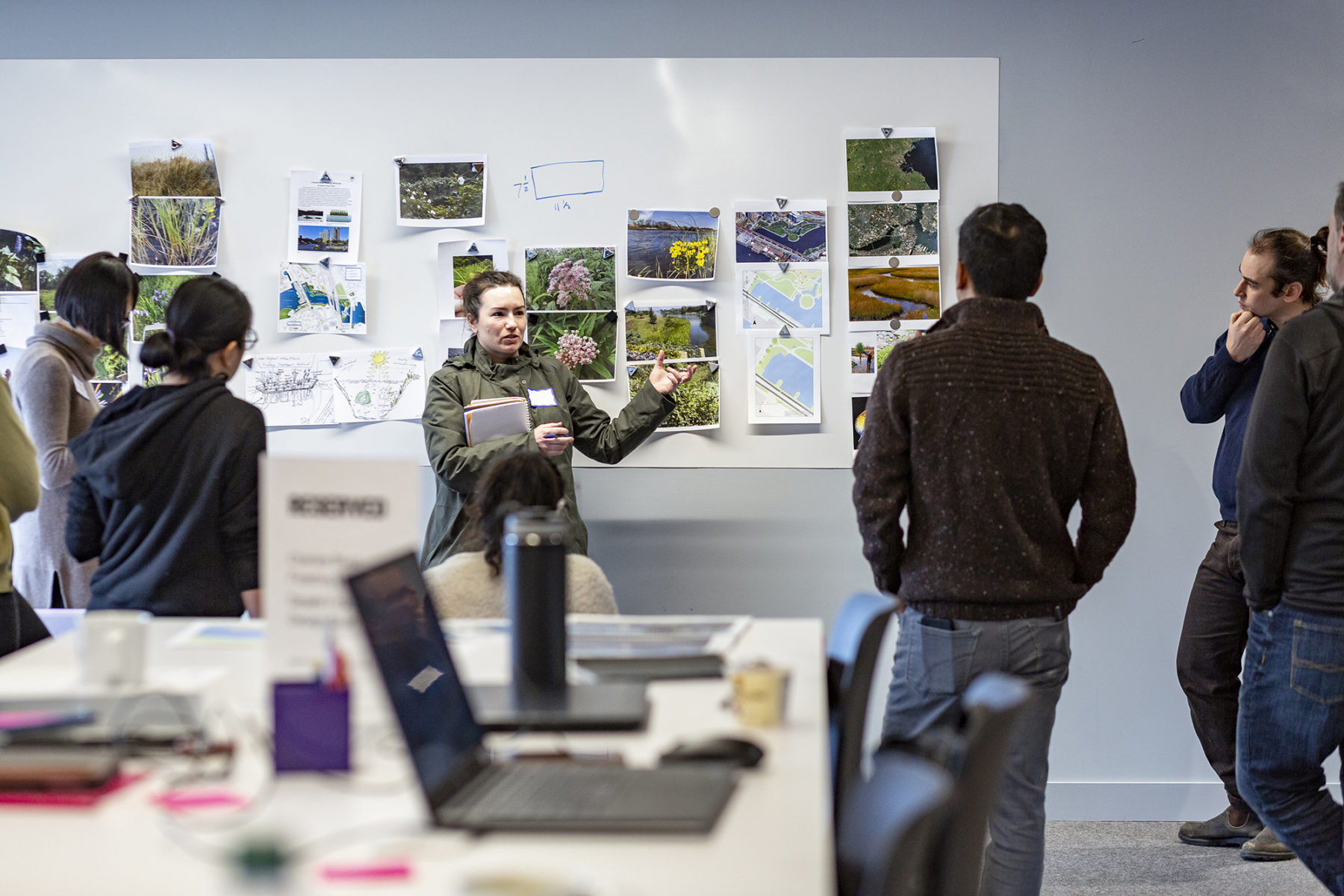
Sabrina Dorsainvil, with the Mayor’s Office of New Urban Mechanics, aims to improve the everyday lives of Bostonians by addressing complex issues like housing, healthcare, and human rights. “Invisible structural racism is felt by people every day,” Dorsainvil said. “To be given the space to talk about it directly and actively work on improving things in this city—for that I’m grateful.”
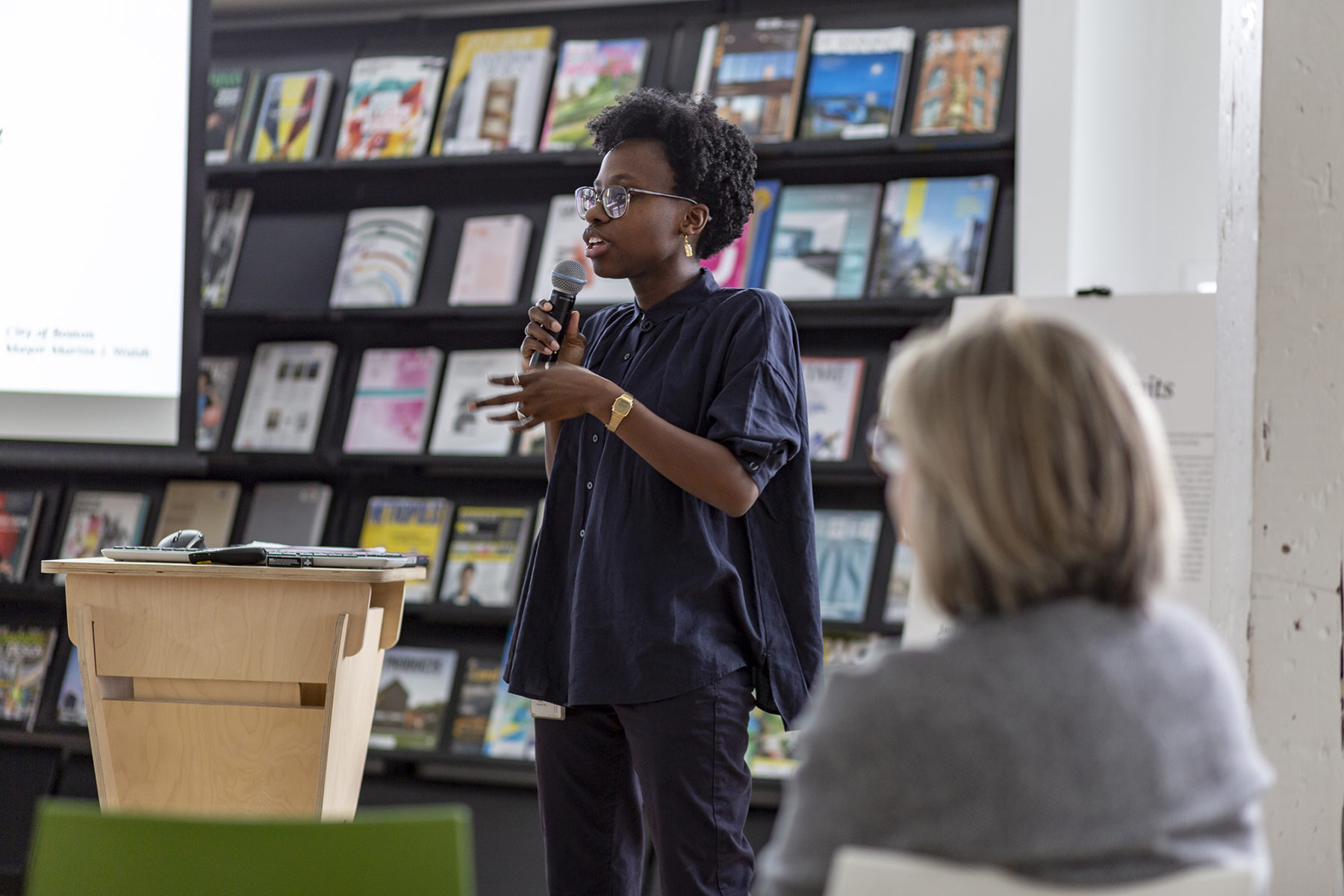
Taking up King’s commitment to service, a group of 20 Sasaki volunteers helped sort donated goods at the Greater Boston Food Bank that will be distributed to hunger relief agencies in the city. More on the Greater Boston Food Bank’s mission can be found here.
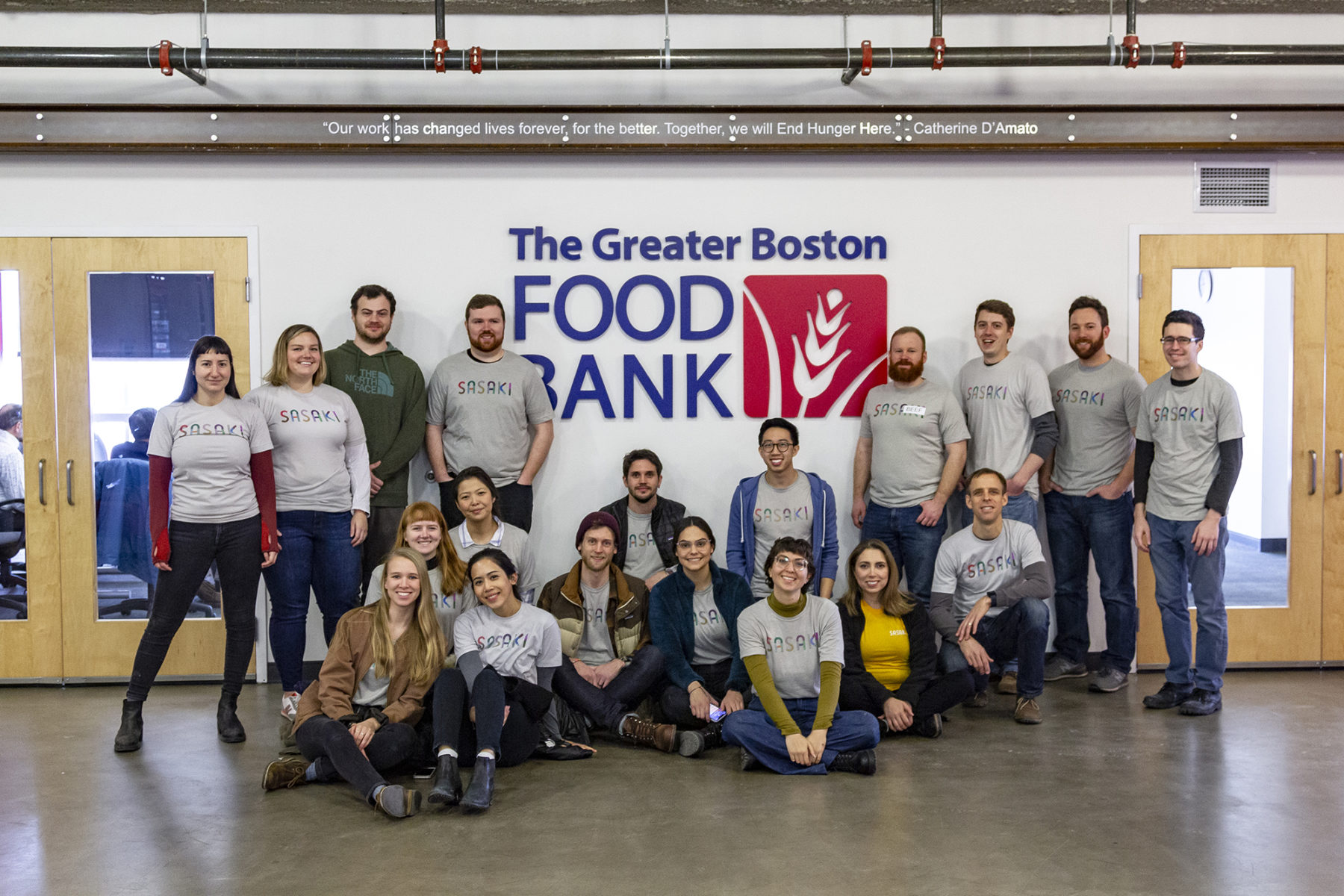
Sasaki designers joined the three remaining research cohorts Eastie for Eastie, ECHOLocator, and G|Code House, on Thursday to help flesh out ideas and prepare for the midterm presentations at the end of the month. Read more about all of the research efforts on the Sasaki Foundation blog.
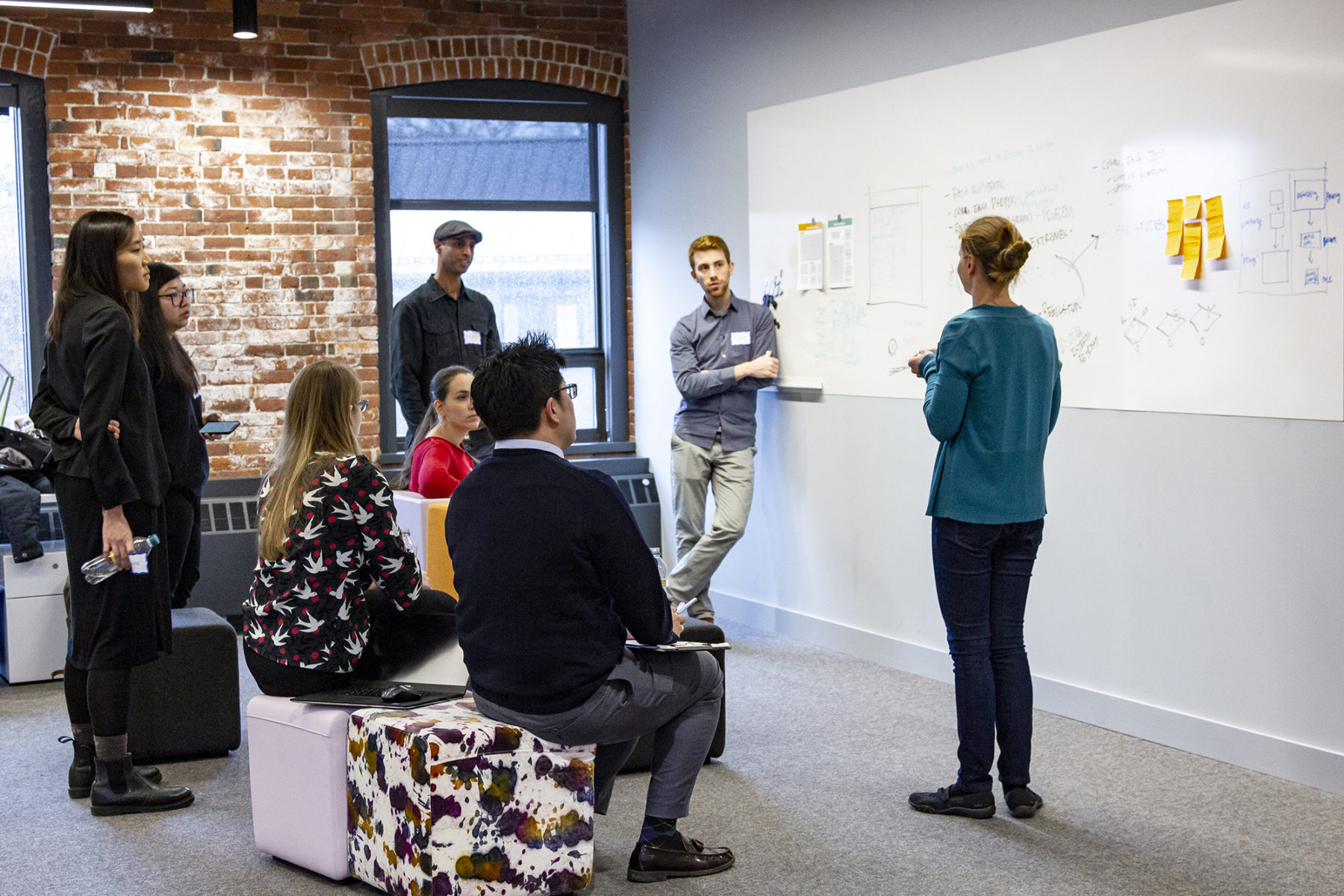
Eastie for Eastie Charrette
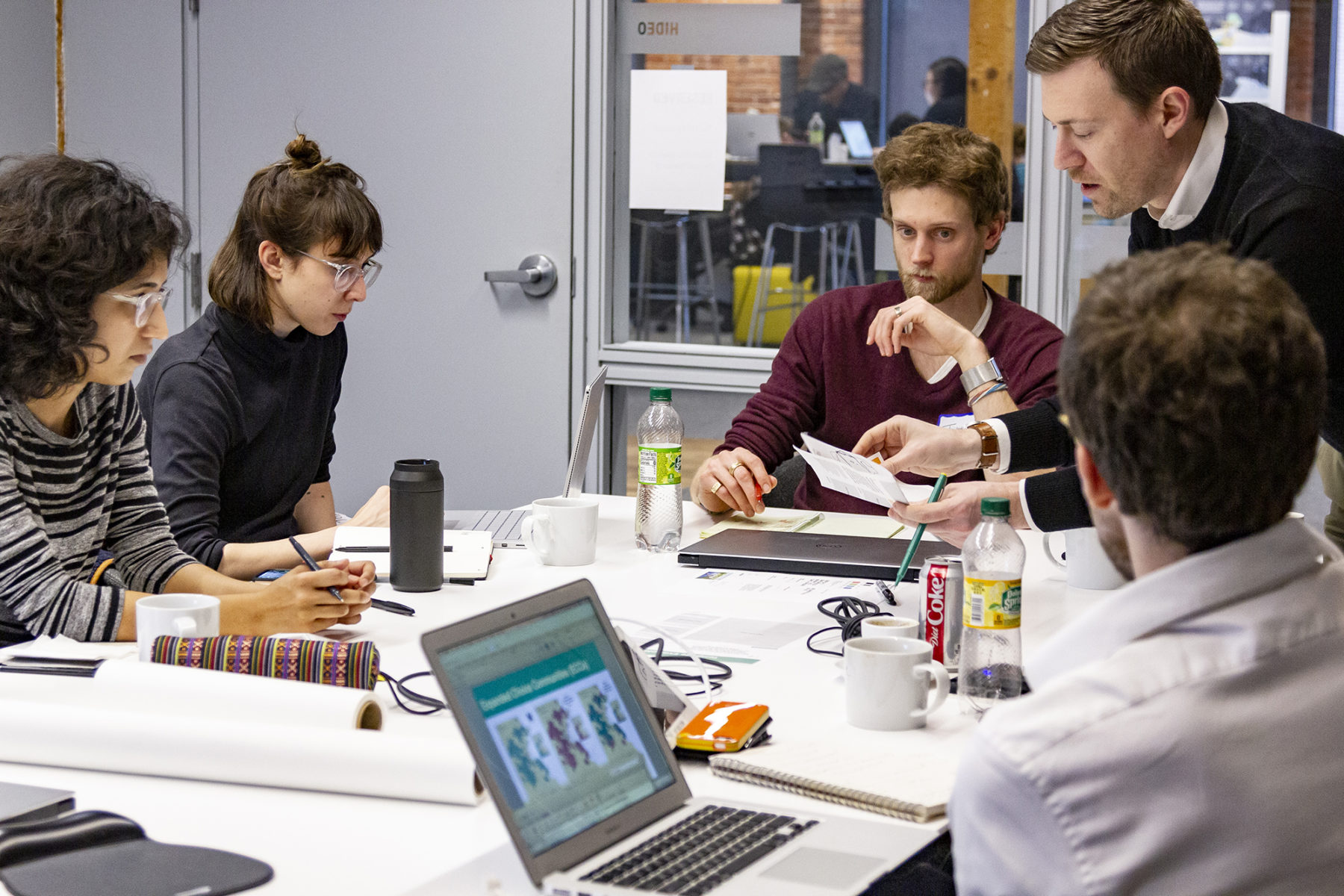
ECHOLocator charrette
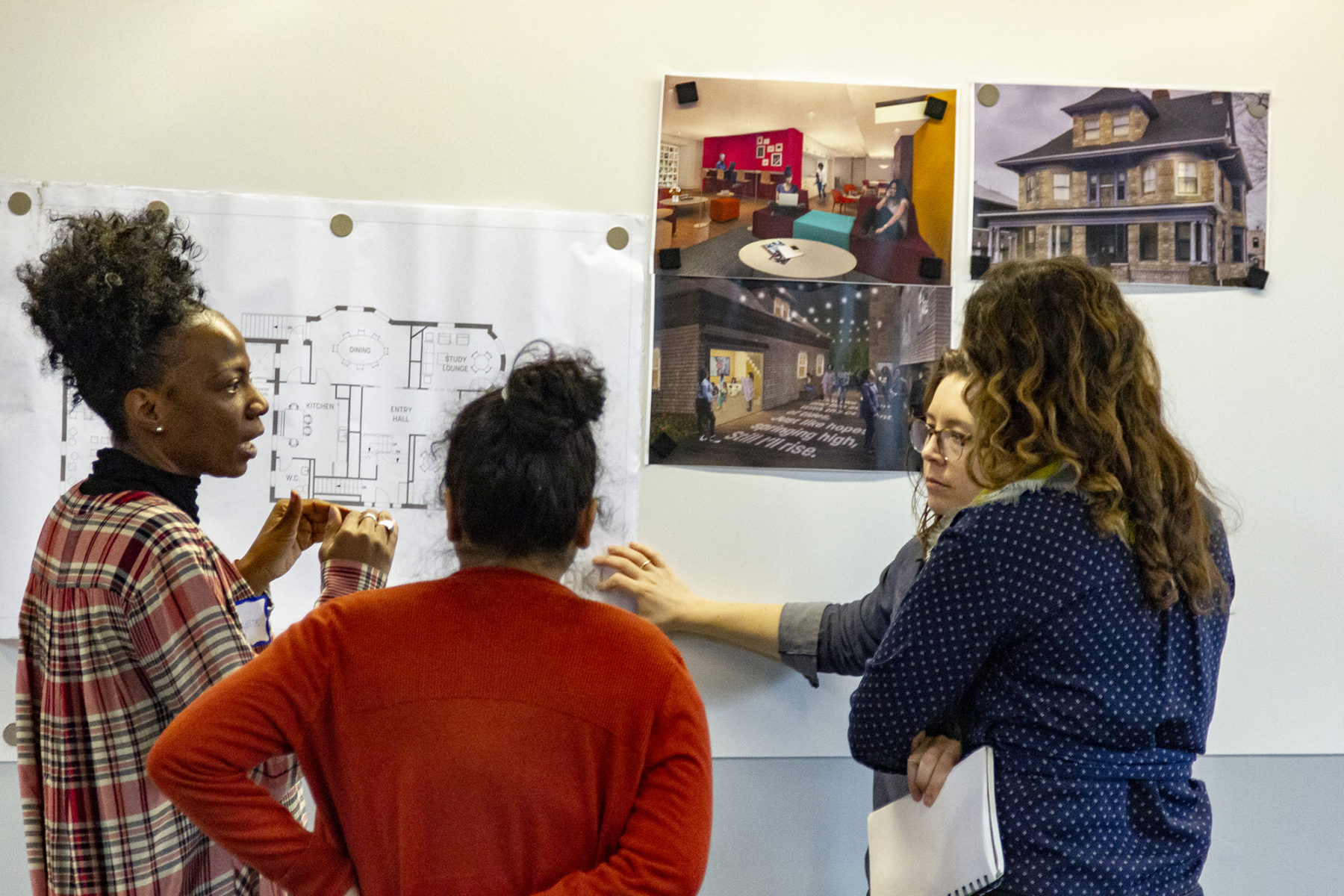
G|Code House charrette
The week closed with an artist talk from Sasaki designer Annie Liang whose exhibition Invisible Portraits was on display throughout the week. The series of paintings depicts custodial workers at the Harvard Graduate School of Design as well as Sasaki, highlighting the stories of the “invisible” and shining a light on the intersections between labor, immigration, and the places people feel belonging or exclusion. Liang charged Sasaki designers to think inclusively about all users of space, including those behind the scenes, as they design public and private space.
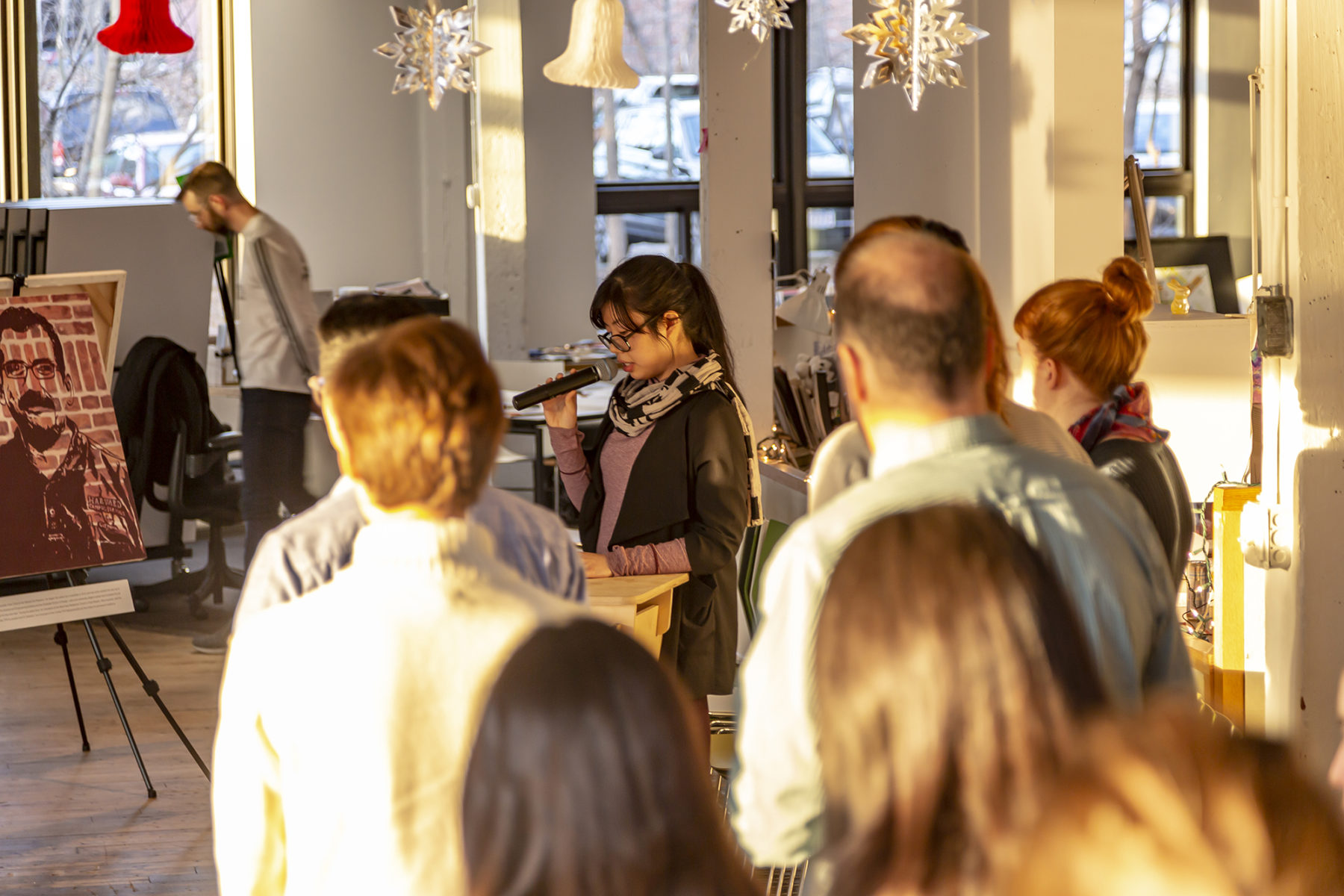
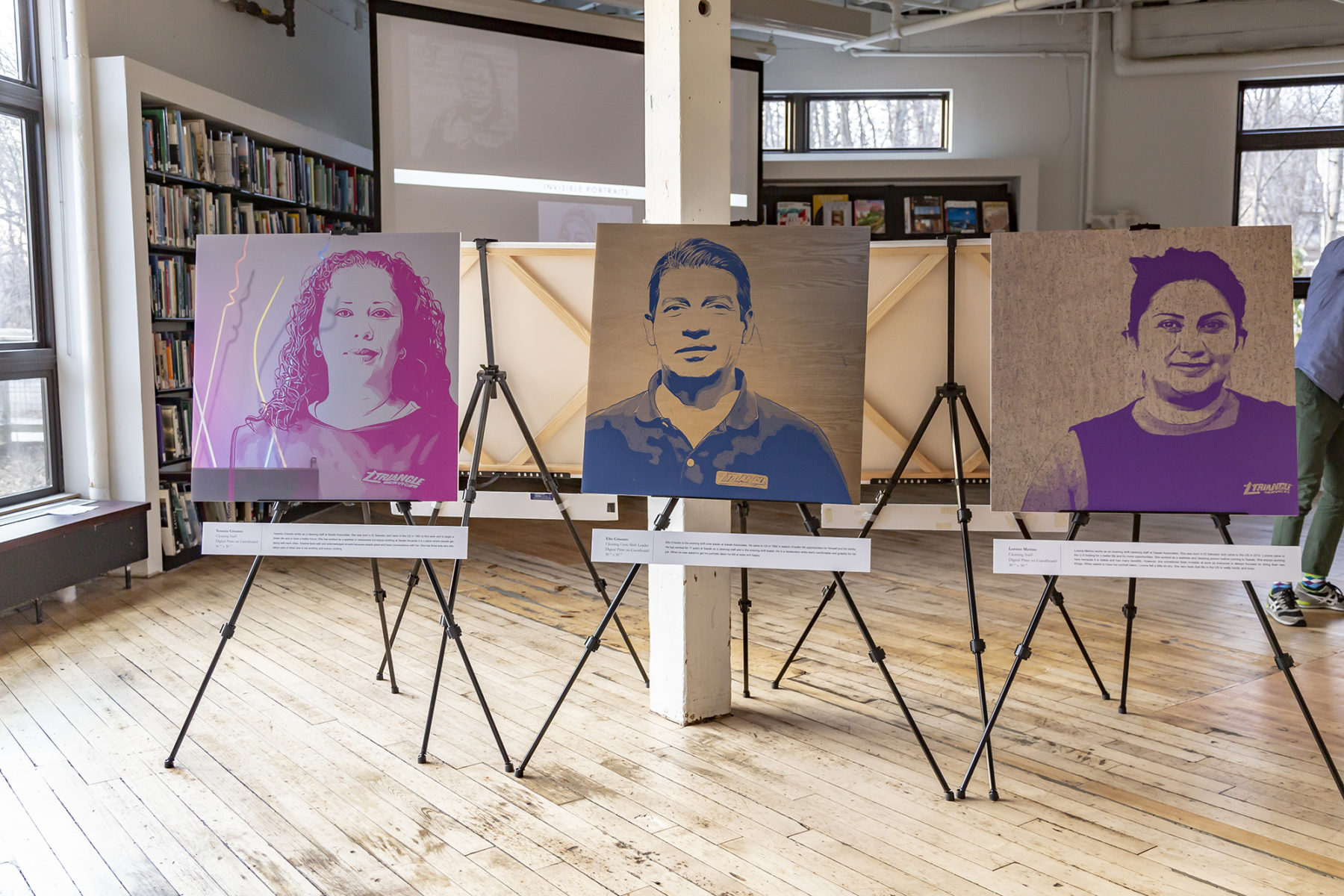
Recognizing Martin Luther King Day at Sasaki
An exploratory visualization of corridors throughout the United States named after the late civil rights leader, this research project looks at data on how the neighborhoods surrounding MLK corridors compare to the larger metropolitan region, across dimensions of race, income and education, and urban development